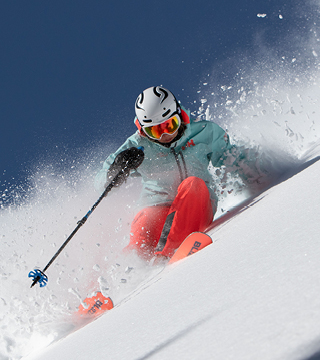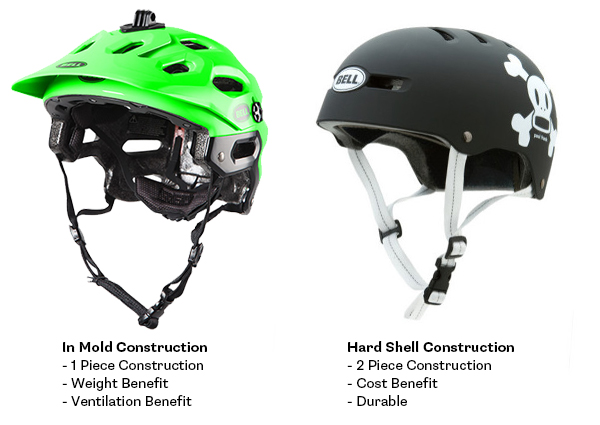Helmets are an absolutely essential piece of gear when you are riding a bike, not only because is illegal not to wear one, but because they could save your life if you are in an accident. They come in three basic styles; street style, road and mountain. Different styles have features specific to their riding situation, but all are designed to protect a riders head from impact at the same time as being both lightweight and comfortable to wear. All helmets sold in New Zealand and Australia must meet a government approved safety standard, so you can rest assured that no matter what you buy from a legitimate retailer, it will be safe.
Helmet Construction:
There are 2 main types of helmet construction, hard shell & in mold construction. Entry level mountain bike helmets consist of a foam liner that is taped or glued to a hard shell exterior. This type of construction makes the helmet slightly heavier with fewer venting options.
Majority of medium to high end bike helmets will have an in mold construction, where the interior liner of the helmet is built into the hard outer shell while it is still in the manufacturing mold. Therefore, creating one piece of material with a hard outer. In mold helmets are lighter, stronger and have more venting options.
There is generally no difference between the two options in terms of protection and overall safety. The main points of difference is hard shell construction helmets have a cost benefit (cheaper to buy), and in mold helmets have a weight and ventilation benefit. However, with the added benefits of in mold you can expect to see a higher price tag associated with the technology.
There are also some lesser known technologies making there way in to helmet construction, the most prominent of those is the use of Koroyd (honeycomb material) in combination with EPS foam (in mold). The use of Koroyd in the construction of helmets allows manufacturers to drastically cut weight and volume, without compromising protection. Smith helmets released the first of which in 2014 which weighs in at only 285g.
Features of a Helmet
Liner: Most inner helmets are made of expandable polystyrene (EPS) foam, designed to dissipate the force of impact. EPS foam liners are an industry standard for action sports, have a low-profile and are lightweight. Higher end helmets are made out of lighter and stronger materials, therefore the more expensive the helmet, the more force it will absorb when your head takes a knock.
Shell: The outer component of a bike helmet is typically made of composite materials like fibreglass, or very hard plastics such as polycarbonate or ABS. The hard shell is designed to spread the force of an impact over a broader area.
Ventilation: Vents are designed to keep you cool and comfortable while you’re riding. Road cycling helmets typically have a large amount of vents to enhance wind flow over your head and keep you cool. Having a large amount of vents also makes the helmet lighter.
Strap: Trail bike helmets usually have thicker straps for rough terrain, and road helmets have lighter and cooler straps. The strap should be comfortable, adjustable and easy to take on and off.
Weight: Higher end helmets are made out of lighter and more expensive materials. The lighter the helmet, the more comfortable it will feel when you are out riding, especially for long endurance rides.
Fit System: Some helmets will come in one size, compared to others that will come in S, M, L etc. All helmets will have an adjustable fit system to enable each size to fit a range of head sizes. That way you can adjust the fit of the helmet to your individual head size. Entry level helmets have a basic fit system with less range of adjustment. Higher end helmets will have an adjustable dial at the back of the helmet, which allows you to find a precise fit. Finding the correct fit is essential, and all helmets will have a size guide range that refers to your head circumference. If you are unsure of your size, be sure to take a simple measurement and refer to the size guide.
When to Replace Your Helmet
Helmets are designed to absorb the impact when you hit your head. Therefore if you take a tumble and hit your head, your helmet will become damaged. Helmets are only good for one crash. You should replace your helmet after any significant impact, even if the helmet appears completely fine. Some brands offer a discount on post accident replacement so be sure to inquire with customer services on the Torpedo7 website, or ask the friendly team at your local store.
If you’ve been crash-free, the general recommendation is to replace your helmet after five years use. This is because your helmet will weaken overtime, through exposure to sunlight and pollution etc, and will no longer be strong enough to absorb the force of impact when you hit the ground.
See you on the trail!
Whitney Dagg
Torpedo7
Dunedin




















